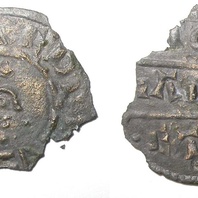
Viking Objects
Coin of Aethelred (1989-58/3395)
A silver penny of Aethelred I of Wessex was found in the mass grave at Repton and minted by a moneyer apparently called Liabinc. The location of minting is unknown. Aethelred I was King of Wessex from 865 until his death in 871. Aethelred’s reign coincided with the arrival of the Viking Great Heathen Army in England and he fought them with little success during their invasion of Wessex which began in 870. After his death, he was succeeded by his youngest brother, Alfred the Great, who carried on the war with the Vikings. Minting coins was a way of controlling the means of exchange within a kingdom and which created a more easily administered standardized system of trade. Moreover, the coins themselves were often used as propaganda, portraying symbols and statements that gave off a desired message. The Vikings later used the minting of coins to legitimize their own rule.
Read More
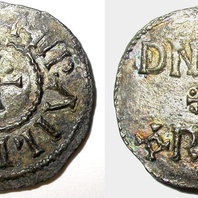
Viking Objects
Viking York Penny (1995-17)
This silver penny was found during demolition work at St Alkmund’s Church in 1967. This type was minted at York for the rulers Sigeferth and Cnut, but this coin has no names, whether of a ruler, a moneyer or a mint. Sigeferth is recorded as being a pirate in Northumbria around 893 and seems to have assumed control after Guthfrith’s death in 895. Cnut is not attested in written sources but Scandinavian tradition places him in Northumbria around the same time. The joint Sigeferth Cnut coins and the sole issues of Cnut were minted around c. 900. This type of penny is known as Mirabilia Fecit from the Latin Cantate Dominum canticum novum, quia mirabilia fecit. Mirabilia fecit means ‘he made it marvellously’ and is the inscription on one side of the coin while the other has the inscription DNS DS REX (‘Dominus Deus rex’ = ‘the lord God almighty is king’).
Read More
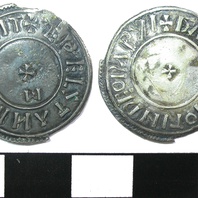
Viking Objects
Silver Penny (1914/543-1)
This silver penny of King Aethelstan, who was King of England from 927-939, was minted in Derby by the moneyer Gadierd between 937-939. It is not known where it was found. Moneyers were people who were permitted to mint money on behalf of the king. Minting coins was a way of controlling the means of exchange within a kingdom and which created a more easily administered standardized system of trade. Moreover, the coins themselves were often used as propaganda, portaying symbols and statements that gave off a desired message. The Vikings later used the minting of coins to legitimize their own rule.
Read More
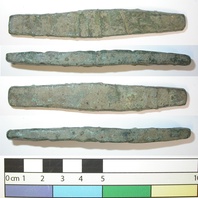
Viking Objects
Copper Alloy Ingot (1986/975-AE29)
This copper alloy ingot was found at the Little Chester Roman fort site near the Roman defences of Derby. This item, alongside others found in the ditches and structures close to the Roman defences, suggests a high level of activity in the area and a significant early medieval presence at this stronghold. Being found in proximity to a stone mould, it is likely that this ingot was used for metalworking, probably of jewellery. Similar ingots are known from Viking period contexts in northern Europe, as at Birka and Lund.
Read More
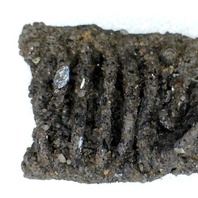
Viking Objects
Silver Wire Embroidery (1988/225-16)
This silver wire was found in Mound 11 at Heath Wood, Ingleby, Derbyshire. This burial mound contained fragments of the remains of an adult human together with the cremated remains of animals, including a small dog, a horse and sheep. The burial was accompanied by this silver wire, an iron spade shoe, some small iron nails and some corroded metalwork. The silver wire was found in two parts with traces of carbonised fibres attached. This suggests that it was probably attached to a piece of cloth. Silver and gold embroidery are known from a number of Viking Age graves, including from nearby Repton, Derbyshire, as well as further afield, e.g. Birka, Sweden. At Birka, wire embroidery was found on caps and headbands, although there is no reason to think that it was only used on headgear at all times.
Read More
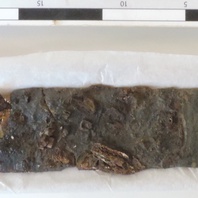
Viking Objects
Sword Blade (1987/590-2)
This fragment of a sword blade was found at the Viking cemetery at Heath Wood, Ingleby in Mound 1. It is incomplete and consists of a 385mm long section of the blade with a rounded tip. the blade has a fuller down the middle to reduce weight. The sword would probably have been over 900mm long when complete, so less than half the blade survives.
